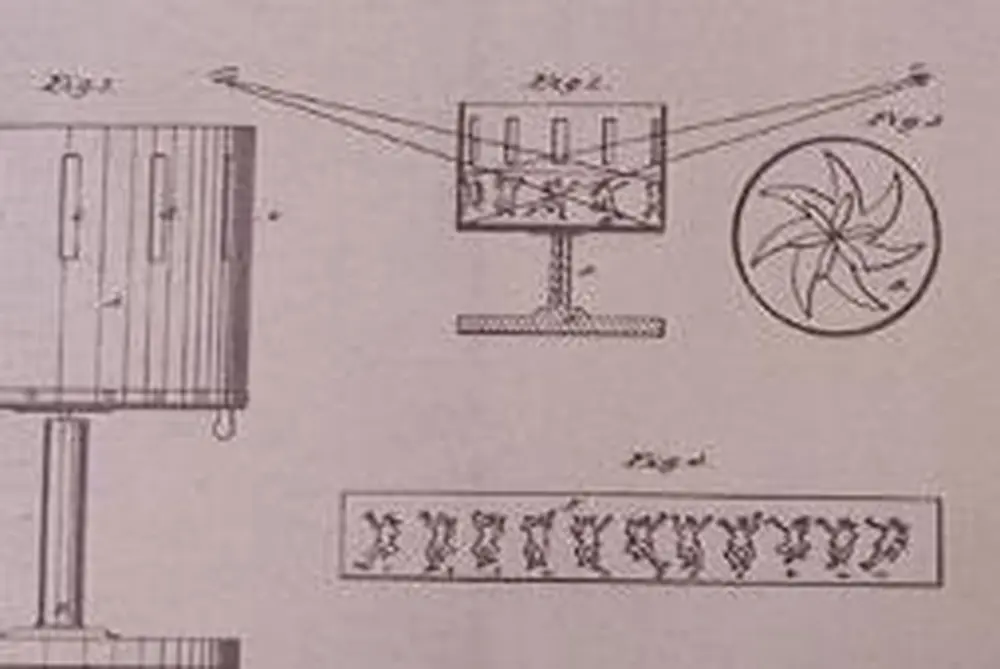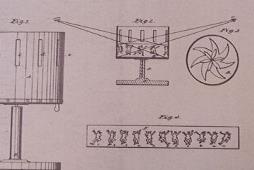

Mickey Mouse became a household name, thanks in part to such uncommon names as the "thaumatrope," the "zoetrope," and even the tongue-twisting "phenakistoscope."
These nineteenth-century contraptions laid the groundwork for Walt Disney's cartoon creations, as well as the animated films of today, including Wallace and Gromit: The Curse of the Were-Rabbit-this year's Oscar winner for animated feature film. These inventions are also a rich source of fascination and research for Richard Leskosky, associate director of the Unit for Cinema Studies in the College of Liberal Arts and Sciences.
For more than 15 years, Leskosky has studied early optical machines, as well as the closely related "flip books" that allow you to watch brief animations by flipping the pages. His specialty is the history of pre-cinema animation inventions, a history that involved some of the period's greatest scientists-including Michael Faraday, a pioneer in electro-magnetism and the discoverer of benzene, and Charles Babbage, who created a precursor of the computer.
One of the simplest and earliest of the nineteenth-century devices is the thaumatrope, which is essentially a disk with a drawing on one side and a second drawing on the other. The disk spins on a string; and if you spin it rapidly enough, the eye combines the two images into one picture.
According to Leskosky, one classic thaumatrope shows a birdcage on the front and a parrot on the other side. When you spin the thaumatrope, the images appear to combine, putting the parrot inside the birdcage. He says this device became a popular "philosophical toy" in households.
"At that time, you couldn't just have a toy," Leskosky says. "Toys had to teach you something, and the thaumatrope fit the category nicely, demonstrating things about vision and perception."
Although technically the thaumatrope did not create animated images because the pictures do not move, it led to a long line of animation devices that carry complicated names usually ending in "scope" or "trope."
In 1833, for example, W. G. Horner first described what would later become known as the zoetrope, in which successive images were printed on the inner wall of a cylinder. By spinning the cylinder and looking through the slits in its outer wall, people could see the images fly by one at a time. Like the successive images in a movie, the pictures trick the eye and appear to be moving.
The praxinoscope followed in 1877. This device operated on similar principles, but, instead of looking through slits, viewers using the praxinoscope saw the images reflected on a series of mirrors in the center of the device. This made the images much brighter and produced less flicker, Leskosky says.
While some of the simpler animation devices showed up in homes, the more elaborate inventions became popular attractions at arcades in the late 1800s. The praxinoscope even evolved into a projection system that displayed moving images to large audiences.
"One of the things I find fascinating is that different types of these pre-cinematic devices are still being manufactured today, and people are still getting patents on variations of the old things," Leskosky adds. "Just a few months ago, a fellow from Texas got in touch with me because he had designed a flip book in a way that no one has done before."
Among the most unusual of the modern variants of these devices was the "Masstransiscope," created by an independent filmmaker in 1980. In a New York subway, he created a wall with 228 slits in it; and behind each slit was a hand-painted drawing. As subway passengers rode past the wall, they saw the successive images one at a time through the slits-much like the zoetrope. The result: They saw a very brief animated film as they raced by.
According to Leskosky, flip books, zoetropes, and similar devices were sources of many hours of entertainment in the 1800s, making them "the Game Boys of the nineteenth century."
He points out that "like Game Boys, many of them were hand-held, they provided you with visual entertainment, and you had some control over them. You could flip images backwards, forwards, faster, slower."
But the similarity doesn't end there.
Says Leskosky: "Like Game Boys, some of these devices were also fairly expensive. Some cost about a week's wages."